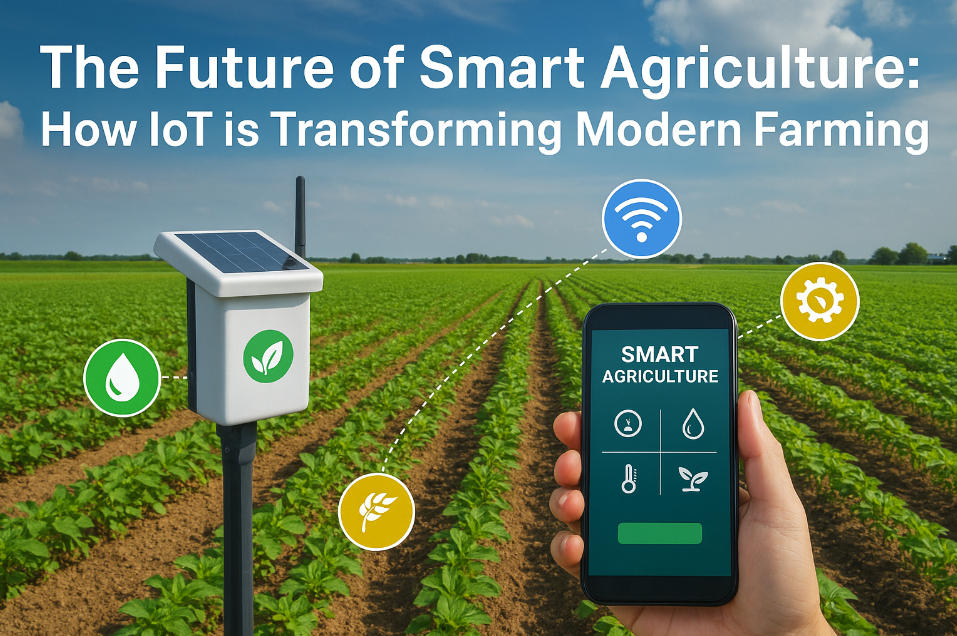The agricultural industry is rapidly evolving with the integration of technology, data analytics, and automation. Smart agriculture — which combines precision farming, IoT, AI, and sustainable practices — is becoming essential for modern farmers, agronomists, and researchers. To meet the growing demand for knowledge in this area, numerous online courses are available in 2025, offering learners flexible, accessible, and comprehensive training. These courses provide foundational skills, practical applications, and insights into cutting-edge innovations transforming agriculture worldwide.
1. Precision Agriculture Fundamentals
This course introduces the core concepts of precision agriculture, including soil monitoring, GPS-guided machinery, and crop health analysis. Learners gain practical skills in using digital tools to optimize input usage, improve yields, and reduce environmental impact. Interactive modules often include case studies and software simulations to demonstrate real-world applications.
2. IoT Applications in Smart Farming
The Internet of Things (IoT) is revolutionizing farm management. This course focuses on sensor networks, connected devices, and cloud-based data collection to monitor crops, soil moisture, weather, and livestock. Participants learn how to design IoT systems for farms, analyze collected data, and implement automated responses for irrigation, fertilization, and pest control.
3. AI and Machine Learning in Agriculture
Artificial intelligence and machine learning are transforming decision-making in agriculture. This course teaches learners how AI models can predict crop yields, detect diseases, and optimize resource allocation. Students gain experience in using machine learning software to analyze farm data and improve operational efficiency.
4. Sustainable Farming Practices
Sustainability is central to smart agriculture. This course explores techniques such as crop rotation, cover cropping, integrated pest management, and soil conservation. Learners understand how to balance productivity with environmental responsibility, implement eco-friendly solutions, and reduce greenhouse gas emissions on farms.
5. Drone Technology for Agriculture
Drones have become essential tools for monitoring crops and gathering high-resolution aerial imagery. This course provides hands-on training in drone operation, data collection, and image analysis for precision farming. Students learn how to identify crop stress, plan irrigation schedules, and assess field conditions using drone technology.
6. Big Data Analytics in Agriculture
Big data enables predictive insights and efficient farm management. This course covers data collection methods, statistical analysis, and visualization techniques. Learners discover how to interpret large datasets to make informed decisions about crop planning, disease management, and resource allocation, ensuring higher productivity and cost-effectiveness.
7. Robotics and Automation in Farming
Farm robotics are automating labor-intensive tasks such as planting, harvesting, and weeding. This course introduces autonomous tractors, robotic harvesters, and automated irrigation systems. Participants learn about the design, programming, and practical applications of agricultural robots to enhance efficiency and reduce labor costs.
8. Smart Greenhouse Management
Greenhouses are increasingly equipped with sensors, climate control systems, and automated irrigation. This course provides insights into managing smart greenhouses, optimizing temperature, humidity, and light conditions for maximum yield. Students learn how to integrate technology to monitor plant growth, reduce resource use, and maintain consistent production.
9. Agricultural Supply Chain and Blockchain
Blockchain technology is improving traceability and transparency in agriculture. This course explores how digital ledgers track crops from farm to market, ensure food safety, and streamline logistics. Learners understand how blockchain can enhance efficiency, reduce fraud, and support sustainable supply chain practices.
10. Agricultural Entrepreneurship and Digital Tools
This course combines knowledge of smart agriculture with business strategy. It focuses on using digital platforms, e-commerce, and farm management software to run profitable and sustainable farming ventures. Students learn how to leverage technology to market products, manage operations, and scale agricultural businesses effectively.
Benefits of Online Learning in Smart Agriculture
Online courses provide flexibility, allowing learners to study from anywhere and at their own pace. Many platforms offer interactive content, virtual labs, and real-world projects that enhance practical understanding. Certifications from reputable programs can boost career prospects, whether in research, farm management, agritech startups, or advisory services. By 2025, these courses are bridging the gap between traditional agriculture knowledge and the skills needed for modern, tech-driven farms.
Conclusion
Smart agriculture is shaping the future of food production, and continuous learning is essential for anyone involved in the sector. The top 10 online courses in 2025 provide comprehensive training in precision farming, IoT, AI, sustainability, robotics, and digital farm management. By enrolling in these programs, learners can acquire the expertise needed to adopt cutting-edge technologies, improve productivity, and contribute to sustainable and efficient agricultural systems worldwide.
FAQs
1. Are these smart agriculture courses suitable for beginners?
Yes, many courses are designed for learners with little to no prior experience, offering foundational modules before advancing to complex topics.
2. Can I apply the knowledge from these courses directly to my farm?
Absolutely. Most courses include practical projects, case studies, and software simulations that can be implemented in real-world farm operations.
3. Are certificates from online courses recognized in the agricultural industry?
Certificates from accredited platforms or reputable universities are widely recognized and can enhance career opportunities in agritech, consulting, and farm management.
4. Do these courses cover sustainable farming practices?
Yes, several courses focus on sustainability, teaching techniques like crop rotation, precision irrigation, organic fertilization, and integrated pest management.
5. How long does it take to complete these online courses?
Course durations vary from a few weeks to several months, depending on depth, content, and whether participants study full-time or part-time.
6. Are there courses specifically on AI and robotics in agriculture?
Yes, specialized courses focus on AI, machine learning, and robotics applications, including autonomous tractors, robotic harvesters, and data-driven decision-making.
7. Can international students enroll in these programs?
Most online courses are accessible globally, allowing learners from different countries to participate, often with multilingual support or subtitles.
8. Do these courses require any special software or equipment?
Some courses may require access to farm management software, data analysis tools, or drones for practical exercises, but many provide virtual labs or simulations.
9. Is prior farming experience necessary?
No, prior farming experience is helpful but not mandatory. Courses often provide foundational knowledge and gradually introduce advanced concepts.

